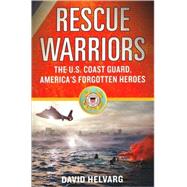
DAVID HELVARG is founder and president of the Blue Frontier Campaign, a Washington, D.C.--based organization working for ocean and coastal conservation. An award-winning journalist, he has written for The New York Times, the Los Angeles Times, Smithsonian, Popular Science, Sierra, and The Nation, and has produced more than forty documentaries for PBS, the Discovery Channel, and others. He is also a licensed private investigator, body surfer, and scuba diver. His previous books include The War Against the Greens, Blue Frontier, and 50 Ways to Save the Ocean. He lives in the San Francisco Bay Area.
The New copy of this book will include any supplemental materials advertised. Please check the title of the book to determine if it should include any access cards, study guides, lab manuals, CDs, etc.
The Used, Rental and eBook copies of this book are not guaranteed to include any supplemental materials. Typically, only the book itself is included. This is true even if the title states it includes any access cards, study guides, lab manuals, CDs, etc.